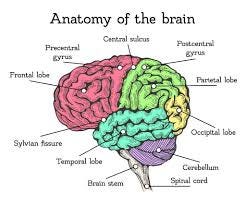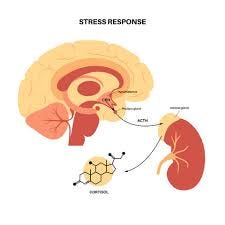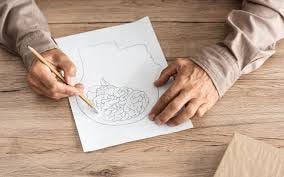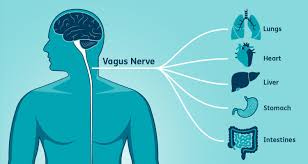What If Everything You’ve Learned About Men’s Emotions Is Wrong? 🧠
The Shocking Neuroscience Behind Why Men Struggle to Talk and What Actually Helps Them Heal (10min Read)
***Disclaimer: Today’s blog contains conversations about anxiety, depression, self-harm, abuse, sexual assault, and suicidal ideations. These conversations and related language choices may trigger some readers. Please proceed with caution and care. If you are experiencing emotional distress or are feeling suicidal, call the National Suicide Prevention Lifeline at 800-273-TALK (8255) or visit suicidepreventionlifeline.org***
TL;DR – Why Men Don’t Talk (and How to Help Them Start)
Men aren't emotionally broken—they're wired, conditioned, and traumatized differently.
Male brains process emotion through action, not words. Emotional pain often shows up as silence, sarcasm, or stress.
Traditional therapy misses men because it wasn’t built for them.
Most men do want to talk—but not in the ways you expect.
Learn the neuroscience, decode the signals, and meet them where they are—shoulder to shoulder, not face to face.
Real connection starts when we stop pathologizing men’s silence and start listening to it.
Why is Talking to Men About Their Emotions So Hard?
When someone wants a man to cry, they call me.
I can look a man, or anyone really, in the eyes and instantly know what’s going on under the surface.
After thousands of hours in client sessions, it’s just something you pick up.
I see people, really, truly, see them. I can see the light in them when all they can see is darkness.
I can take a surface-level conversation with a guy about baseball stats, work stress, or a new PR at the gym, right to a real conversation about relationship struggles, sexual trauma they experienced as a kid, or how they feel like they want to kill themselves.
This is a blessing and a curse at times… It doesn’t always make me the easiest to be around.
Because there is no hiding… I see right through the surface-level costumes people are wearing to try and signal to everyone around them that, “Everything is ok.”
And let me be clear, it’s not just men who do this, we all do, but it is Men’s Mental Health Awareness Month, so today, we’re gonna talk about men, their emotions, and their mental health.
Here’s a question we almost never ask honestly: If men are so emotionally avoidant… why do they die by suicide four times more often than women?
If men “don’t want to talk,” why are so many trying, desperately, silently, subtly, and being ignored?
Why do so many of these conversations get met with one-word answers, humor, deflection, or worse, stonewalling or anger?
What if it’s not that men aren’t emotional…
What if it’s that we’ve misunderstood how emotion looks in the male brain and body?
And how does that shift the kind of support they need?
Great question, let’s find out.
What’s Actually Going On in the Male Brain?
We talk a lot about “toxic masculinity,” but we almost never ask: What is masculinity protecting?
And perhaps more importantly: What is it protecting us from feeling?
These are important questions, and the answers lie in the neurobiology and psychology of men.
The Neurobiology of Emotional Expression in Men
Men and women are born with largely the same brain parts.
But the way those parts wire together, light up, and respond under stress?
That’s a different story.
The Emotional Shutdown Circuit
When a man perceives an emotional threat (shame, rejection, inadequacy), here’s what his brain does, often in milliseconds:
Amygdala fires early and hot. Threat is detected fast and framed as dangerous.
vmPFC (emotional meaning-making) activity drops. He may feel something, but can’t name it.
Insular cortex (which senses the body’s internal states) shows less activation than in women. This means many men literally have less felt awareness of what’s going on inside their bodies.
So when he says, “I don’t know what I’m feeling,” he might not be lying.
He might be telling the neurological truth.
The Right vs. Left Hemisphere Divide
In emotionally stressful situations:
Women tend to have more balanced cross-talk between the right (emotional) and left (verbal) hemispheres.
Men’s hemispheres are more specialized and segregated. Emotions get stuck on the right side—intense, nonverbal, somatic—and struggle to reach the language centers on the left.
So he might feel it. But he can’t say it.
Not because he’s withholding—because he’s partitioned.
Mirror Neurons and Empathy Gaps
Studies show men, on average, have lower activation in their mirror neuron systems, the circuits responsible for emotional mirroring and empathy, especially when observing pain in others.
This isn’t a defect, it’s a design.
Evolutionarily, men were wired to suppress distress so they could take action in threatening environments.
Pain, crying, freezing? These would’ve meant death on a battlefield.
So your partner “not reacting emotionally” doesn’t always mean he doesn’t care.
It might mean he’s operating in “mission mode”, not emotional attunement mode.
The Cortisol Trap
Men’s bodies also metabolize cortisol (the stress hormone) more slowly than women’s.
This means after a stressful interaction, a man’s body stays in threat mode longer.
If you try to “just talk it out” too soon after a rupture, you’re often meeting a biological wall.
This Isn’t Personality. It’s Architecture.
So when we say men are “emotionally unavailable,” what we’re really saying is:
The male brain has a different route to vulnerability, one that most people don’t even know exists.
It doesn’t mean he lacks depth.
It means we haven’t built the maps yet.
The Psychology of Male Disconnection: What If He Never Learned to Feel?
Let’s bring in some psychology now because this isn’t just biology.
If you want to understand why so many men are emotionally unreachable, don’t ask what’s wrong with them.
Ask what happened before they ever had the words.
Because long before a man becomes emotionally shut down, emotionally distant, or emotionally volatile, he is, more often than not, emotionally abandoned.
What Happens When a Boy Is Punished for Having Needs?
Imagine a young boy:
He cries too loudly, and gets told to “man up.”
He shows fear and gets teased by other boys, or shamed by a scared parent.
He gets angry, and instead of someone asking what hurt him, he gets labeled a problem.
So he learns:
Crying = unsafe.
Talking = weak.
Needing = annoying.
That’s not just “tough love.”
That’s what happens when a child’s feelings are ignored so many times, he starts to believe he doesn’t have any.
When a Boy Can't Attach, He Armors
In many families, especially father-absent or emotionally immature homes, boys don’t form secure attachments.
Instead, they’re trained to perform for praise, suppress for safety, or achieve for love.
And the most dangerous part?
He often doesn't know this is trauma. Because nobody ever hit him.
They just ignored his inner world until he forgot it was there.
This is what's called covert emotional neglect. It doesn’t leave bruises.
It leaves internal confusion, shame, and self-alienation.
When you ask a man, “What was your childhood like?” and he shrugs and says, “Fine,”
he’s not dodging you.
He’s showing you how well he learned to disconnect from the pain no one mirrored.
What if he can’t point to the wound because it wasn’t one event, it was a thousand tiny absences?
Identity Is the First Casualty
Here’s the hard truth: Most men aren’t emotionally unavailable.
They’re emotionally undeveloped because their emotional self was never invited to grow.
They were told:
“Don’t be too much.”
“Don’t be too sensitive.”
“Don’t be like a girl.”
Translation? Don’t be human.
And when a boy internalizes that message, what happens?
He builds a self that performs strength… While secretly hating the parts of him that feel anything.
This isn’t just psychology, it’s a survival strategy.
What looks like “stoicism” is often hypervigilance.
What looks like “rationality” is often dissociation.
What looks like “calm” is often nervous system shut down.
He didn’t choose this. He built it to survive in a world that punished his softness.
And now he’s 30, or 40, or 50 trying to make sense of why intimacy feels like danger,
why conflict floods him, why he either says too little or explodes too much…
And no one ever told him: “This wasn’t your fault. But healing it is your work now.”
The Cost of the Armor
When a man doesn’t have safe spaces to be seen emotionally, he either:
Numbs out through overwork, exercise, distraction, or substances
Externalizes through anger, perfectionism, or control
Fakes vulnerability (sharing facts instead of feelings) to appear "emotionally available"
And all of these strategies look like “he doesn’t want to talk” but that’s not the whole story.
Because when we slow down and listen closely, we realize men do try to talk about their emotions.
Just not in the ways most people are trained to recognize.
The Ways Men Do Talk About Emotions (That You're Probably Missing)
Men are often speaking an entirely different emotional language, coded in behavior, humor, or hints.
Here are a few “emotional smoke signals” many people miss:
“I haven’t been sleeping well.” → I’m stressed, but I don’t know how to say it.
"Work’s been nuts lately.” → I feel overwhelmed and maybe inadequate.
“I’ve been drinking more than usual.” → He’s numbing.
“I don’t know what’s wrong with me.” → He’s terrified to say the words depressed or ashamed.
“I’m just tired.” → I’m emotionally depleted but don’t want to seem weak.
Excessive joking → I’m trying to discharge discomfort through humor.
Shutting down mid-conversation → You accidentally triggered shame, not disinterest.
We don’t need men to just learn how to speak differently.
We also need to learn how to listen differently.
What Happens When Men Do Try to Talk?
Most people don’t realize that men often test the water with the indirect disclosures above.
But what happens next? Generally:
They get questioned like suspects.
Their pain is minimized (“But you have so much going for you!”).
Or worse, they’re met with anxiety, judgment, or a push to “just talk more.”
They don’t feel safe. They feel exposed.
So what do they learn?
Vulnerability = punishment. Better to say nothing.
Why Men Shut Down: Invisible Shutdown Triggers
Even the most well-intentioned question—“How are you really doing?”—can be misinterpreted as invasive or threatening if the man isn’t primed to feel safe.
Men shut down emotionally when:
They're asked questions that require a level of introspection they weren’t taught to access.
They sense disappointment or anxiety in the other person’s tone.
They feel interrogated or cornered (“What’s wrong with you lately?”).
They start to feel their shame physiology rise: tight chest, warm face, shallow breath.
Understanding this shutdown response isn’t personal, it’s protective, lets you shift the approach.
Speaking of approaches, therapy is supposed to help heal these things, right?
I’m glad you asked…
Are Men Broken… Or Just Unseen?
Let’s get something straight: the modern mental health field wasn’t built for men.
In most psychotherapy studies, men make up just 26% of participants.
And most of the studies that do include men only study addiction, not depression, anxiety, or trauma.
In a recent review of mental health research, zero of the studies targeted depression in men.
Zero.
So when men say, “Therapy doesn’t work for me,” they’re not always resisting help.
They’re often right.
Most of the things considered “common knowledge” in the mental health space are based on research that focuses primarily on what works for women.
So, you shouldn’t be that surprised that the tools and techniques you’re trying to use with men aren’t working.
Here’s what does, and my top secret tool that gets guys to open up.
What Actually Helps Men Heal?
So if telling men to “open up” doesn’t work… what does?
Here are science-backed, relationally attuned frameworks to initiate mental health conversations that don’t get shut down.
Frameworks That Actually Work
Internal Family Systems (IFS)
Would this be the Mind, Brain, Body Lab Digest if I didn’t mention IFS?!
No, and today I’m even more excited to do so, because IFS is such a powerful tool for men!
My male clients love IFS because:
“Parts” language allows emotion to be externalized.
IFS’s “Self-leadership” concept taps into identity and agency.
Trauma work becomes an internal strategy, not an emotional confession.
And you don’t have to be trained in IFS to start helping the men in your life.
Even just using Parts language can help.
Instead of saying, “Oh, so you’re anxious, stressed, depressed, addicted, etc.”
Say, “A Part of you is anxious.” “A Part of you is scared.”
This helps them stop identifying with the things they think and feel, instantly.
And 9 times outta 10, this will make it much easier for them to talk about this “Part” of them with you, openly and honestly.
Use External Anchors
Instead of “How are you feeling?”, try:
“I read something today about how burnout can make you feel numb. Ever feel that way?”
“That podcast on male anxiety made me think of you, in a good way. Wanna listen together?”
‘I read this mental health blog, written by a crazy brain scientist who explains the neuroscience behind things like mental health & trauma, and thought you might find it interesting…” (Shameless plug)
This makes the convo less about him being the problem and more about joining you in curiosity.
Heard, Helped, Hugged—or Humped?!
When a man, or anyone really, is struggling emotionally, there are usually only four things he’s open to, even if he doesn’t say it out loud:
Heard – He wants to talk… but on his terms. Usually when doing something else, like walking or driving. Listen without fixing.
Helped – He needs a tangible solution, advice, or action step. Men’s brains are task-oriented under stress—help grounds them.
Hugged – Physical touch calms the sympathetic nervous system, especially when he’s stuck in fight-or-flight. A long hug (~20 seconds) boosts oxytocin and slows the heart rate.
Humped – Yep, sex. If the man you’re talking to is your partner, this might be just what he needs. But not just for fun, it’s often about safe contact without words. Additionally, male orgasm releases oxytocin, vasopressin, and prolactin, creating a temporary emotional openness window. This is when his defensiveness drops, his guard relaxes, and the bonding circuitry lights up.
If there’s ever a time he might want to talk, it’s probably 10 minutes after orgasm, when he’s flat on his back, brain bathed in oxytocin, and finally out of fight-or-flight.
Of course, don’t weaponize this moment—but notice it.
What feels like a throwaway cuddle might actually be his most open state of the week.
Alright, time for the grand finale, my top secret tip for talking to men about their emotions, trauma, mental health…
The “Shoulder-to-Shoulder” Secret No One Tells You
This might be the most important practical truth in this entire blog.
Men connect best shoulder-to-shoulder, not face-to-face.
When I meet with male clients, guess what, we’re walking, lifting, or driving.
I’m not sitting there, face to face with him, staring into his soul.
Have you ever noticed that conversations where you’re shoulder to shoulder with a guy are far more effective than sitting on a couch asking “How are you feeling?”
Why is this?
Because it reduces threat, lowers shame, and re-engages the vagus nerve (the calm-down switch of the nervous system) without forcing eye contact or emotional interrogation.
Evolutionarily, men were running next to each other hunting, walking, fishing, climbing, etc.
So, this shouldn’t come as a big surprise, but no one talks about it.
There is even emerging research to support this!
Now that you know, spread the word, and the next time you wanna get deep with a guy, get shoulder to shoulder!
The Truth Is, Men Do Want to Talk—We Just Haven’t Been Listening Right
Men aren’t emotionally broken.
They’re emotionally misattuned, culturally undernourished, and neurochemically built for different entry points.
When you understand that, your conversations can shift from trying to fix him to learning how to meet him.
Not by pushing harder—but by approaching smarter.
Not by demanding feelings—but by recognizing the signals he’s already sending.
Because most men do want connection.
They just haven’t been given the tools—or the safety—to build it.
That’s where we come in.
When we meet men where they are, we don’t lower the bar, we raise the standard for what healing actually looks like.
And when even one man feels safe enough to talk, he becomes the model for ten more.
This is how we change the tide, one real conversation, one shoulder-to-shoulder moment, one unexpected “I see you” at a time.
And in that space? He might tell you something he’s never told anyone.
Not because he’s finally strong enough.
But because, for the first time, he’s safe enough.
Until next time… Live Heroically 🧠
Want to Work With Me? Here Are 3 Ways I Can Help You
Join the Balanced Creator Community (free): It’s the only community on earth built to support the mental health & mindset of content creators & entrepreneurs (creatorpreneurs) while growing and monetizing their brands and businesses.
Become a paid subscriber to the Mind, Brain, Body Lab Digest: You’ll get subscriber-only video posts, email replies, access to my entire blog archive, early access to new products, workshops & tools I create!
Work With Me 1on1 Through the Me 2.0 Program: Work with me 1on1 to heal the unresolved trauma and limiting beliefs that are holding back your health, wealth & relationships. (Extremely Limited Spots; Paid Subscribers Are Prioritized on Waitlist)
Supporting Research
Allen, J. P., & Olson, D. H. (2001). Emotional processing in men: Neurobiological correlates. Journal of Affective Disorders, 63(1-3), 141–149.
Glover, R. A. (2003). No More Mr. Nice Guy: A Proven Plan for Getting What You Want in Love, Sex, and Life. Running Press.
Levant, R. F., & Kopecky, G. (1995). Masculinity Reconstructed: Changing the Rules of Manhood--At Work, in Relationships and in Family Life. Dutton.
Sapolsky, R. M. (2017). Behave: The Biology of Humans at Our Best and Worst. Penguin Press.
Thompson, E. H., & Pleck, J. H. (1995). Masculinity ideology: A review of research instrumentation. Sex Roles, 33(11–12), 573–587.
Addis, M. E., & Mahalik, J. R. (2003). Men, masculinity, and the contexts of help seeking. American Psychologist, 58(1), 5–14.
Seidler, Z. E., et al. (2016). Improving mental health care for men: A systematic review. American Journal of Men’s Health, 10(2), 93–110.
Mahalik, J. R., et al. (2003). Development of the Conformity to Masculine Norms Inventory. Psychology of Men & Masculinity, 4(1), 3–25.
Kilmartin, C. (2005). Depression in men: Communication, diagnosis and therapy. Journal of Men’s Health & Gender, 2(1), 95–99.
Whitfield, G., & Williams, C. (2004). The evidence base for cognitive–behavioural therapy in depression: delivery in busy clinical settings. Advances in Psychiatric Treatment, 10(1), 37–45.
Sutherland, J. A. (2011). Mothering, Fathering, and the Negotiation of Manhood in the African American Community. Journal of African American Studies, 15(3), 304–319.






















Thanks for putting this forward. It is a very important topic that is often ignored.
This is one of the best reading I’ve had on men mental health. Such an important subject in this time and era… Thank you Cody. I have 4 sons, 2 of them adults so this subject touches me deeply and directly. It is important for women also to help us show up in a better way for men in our lives. I have always felt that talking while walking, shoulder to shoulder was the way to discuss hard matters and I am glad science backs it now. I also saw in Arabic countries that in most offices, chairs were often placed sideways which initially felt awkward but then I quickly realized the value of it. Thank you for sharing !